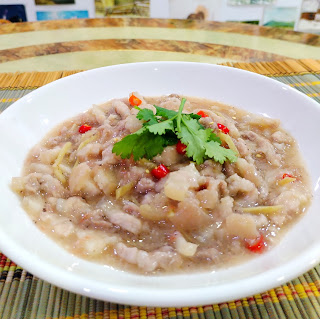Coconut Milk Pudding (椰汁糕)

I'm thrilled to share this cool treat with you – coconut milk pudding. It is the ideal remedy for Malaysia's extremely hot heat. This coconut pudding consists of two primary ingredients. The water from a young coconut comes first. The second ingredient is coconut milk which comes in a box. The original recipe calls for a combination of water and coconut milk. But I replaced it with coconut water. Personally, I think that fresh coconut water is best. It also gives the pudding an extra delicious taste! I am using gelatin powder in this recipe. One may question what the differences are between gelatin powder and agar agar powder. Gelatin needs to be refrigerated to set, but agar can be left out to set at room temperature. Agar can tolerate greater temperatures and sets more firmly than gelatin. It is commonly used for making Jelly. Conversely, gelatin is more frequently found in panna cotta, Jell-O, and jiggly pudding. If you want t...





